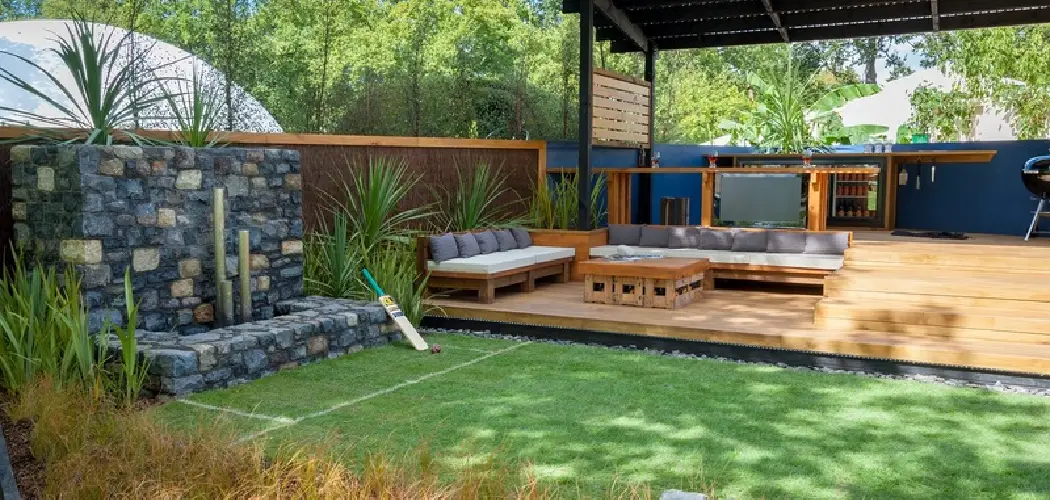Having low spots in your yard can be a frustrating problem. These sunken areas not only detract from the overall appearance of your landscape but can also create drainage issues and lead to the accumulation of water, causing muddy patches or even water damage.
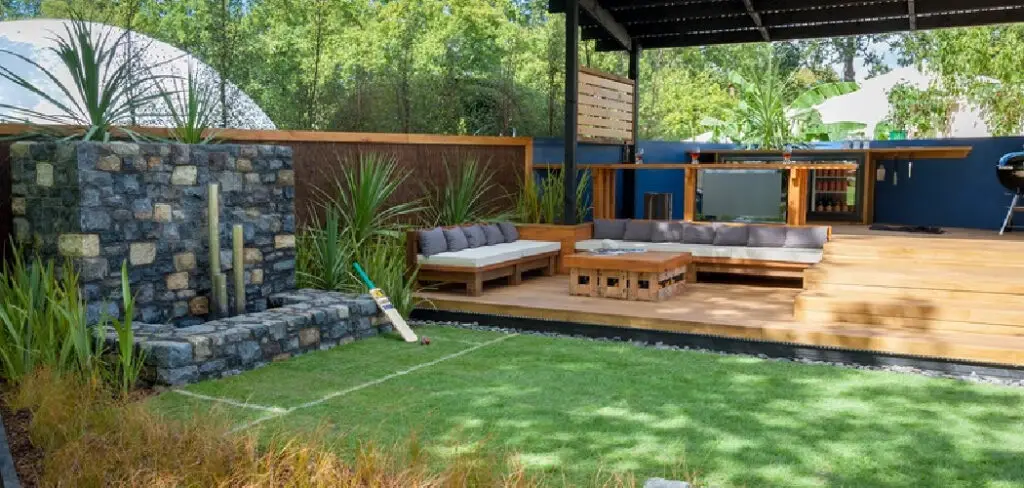
Fortunately, there are several effective methods to fix low spots and restore a level and attractive yard. In this article, we will explore practical techniques and solutions to help you with how to fix low spots in yard.
Whether you’re dealing with minor depressions or larger areas of unevenness, we’ll guide you through the step-by-step process of identifying, preparing, and implementing the most suitable methods to fix low spots in your yard.
With our expert advice, you’ll be equipped with the knowledge and tools necessary to achieve a beautiful and level lawn once again.
Understanding the Significance of Addressing Low Spots in Your Yard
Low spots in your yard can cause a host of problems. They can collect water, leading to flooding, erosion, and muddy areas. They can also allow pests such as mosquitoes and ticks to breed or become more established. Additionally, low spots are often bumpy and uneven due to the build-up of organic matter and accumulated debris.
All of these issues can be addressed by properly filling and maintaining the low spots in your yard.
When you fill a low spot, not only are you helping to prevent these issues from occurring, but you’re also adding value to your property. A level and even yard is much more attractive and appealing than an uneven one with visible dips and valleys.
This means that when it’s time to sell your home, buyers will be willing to pay more for it – a benefit that can far outweigh the cost of fixing the low spots in your yard.
Finally, addressing low spots in your yard can help you better maintain its aesthetic appeal. An uneven lawn looks messy and unkempt, while a well-manicured and level lawn enhances the beauty of your home and adds to its curb appeal.
This is especially true if you’re looking to add landscaping elements such as plants, trees, or a garden, as a level surface will help these features thrive.
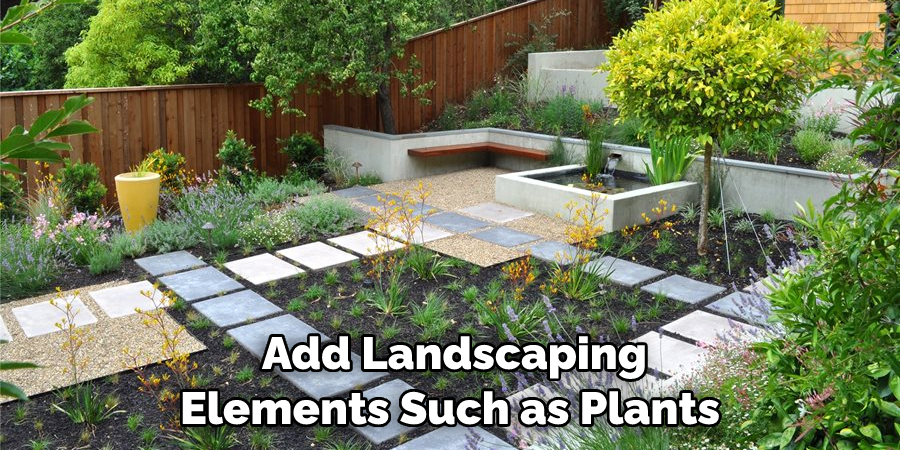
Signs and Symptoms of Low Spots in Your Yard
The first step to fixing low spots in your yard is to identify them. Low spots can cause drainage issues, soil erosion and pooling water, so it’s important to address them quickly. Some of the most common tell-tale signs of a low spot in your yard are:
- Stagnant or pooled water after rainfall
- Standing pools of water that don’t drain away
- Uneven grass with more growth on lower parts of the lawn
- Discolored patches in your turf
- Wet patches that remain wet for days after rain has stopped
- Poor drainage around trees and other areas
If you see any combination of these symptoms in your yard, chances are you have a low spot that needs to be fixed. In the next section, we’ll cover how to go about repairing these spots.
It’s important to note that if your yard lacks drainage or is heavily sloped, it may not be possible to repair the low spots without changing the grade of the land. In this case, you may need professional help from an experienced landscaper. If you think this describes your situation, contact a local landscaping contractor for advice before proceeding with any DIY repairs.
Using Tools to Measure and Confirm Low Spots
The first step to fixing low spots in your yard is to measure and confirm the area that needs attention. This can be done using a few different tools like a laser level, a carpenter’s level, or even a garden hose.
A laser level uses lasers projected onto an area to determine surface levels. This tool is best used for larger areas and more precise measurements. A carpenter’s level is ideal for measuring smaller sections of your yard as it requires less setup time than a laser level and provides quick readings.
Lastly, you can use a garden hose which is often the least expensive option but does require manual leveling to get an accurate reading.
Once you have identified the area that needs work, it’s time to start fixing the low spots in your yard. Depending on what you need to do, the next steps may vary. You could fill in the area with soil, add a layer of gravel or rock, install drainage pipes, or even build a retaining wall.
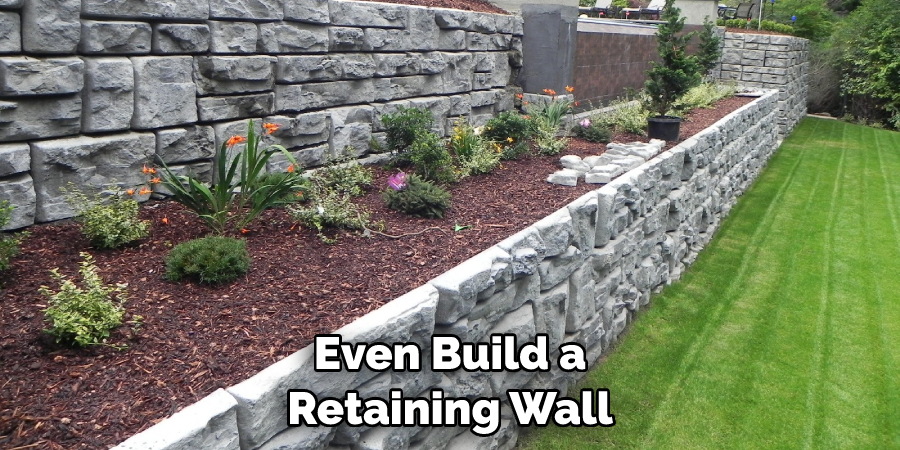
No matter what option you choose for your project, it’s important to measure and confirm the depth of the low spot before beginning work. This will help ensure that everything is done correctly and can save time and money down the line. With this information as a guide, you are now ready to tackle any low spots in your yard!
10 Methods How to Fix Low Spots in Yard
1. Topdressing:
Topdressing involves applying a layer of soil or a soil mixture to raise the level of low spots. Begin by preparing the low areas by removing any debris, rocks, or weeds. Next, spread a layer of quality topsoil or a specialized soil mix over the low spots. Use a rake or shovel to evenly distribute the material, ensuring it blends seamlessly with the surrounding area. Water the newly topdressed spots thoroughly to promote settling and compaction.
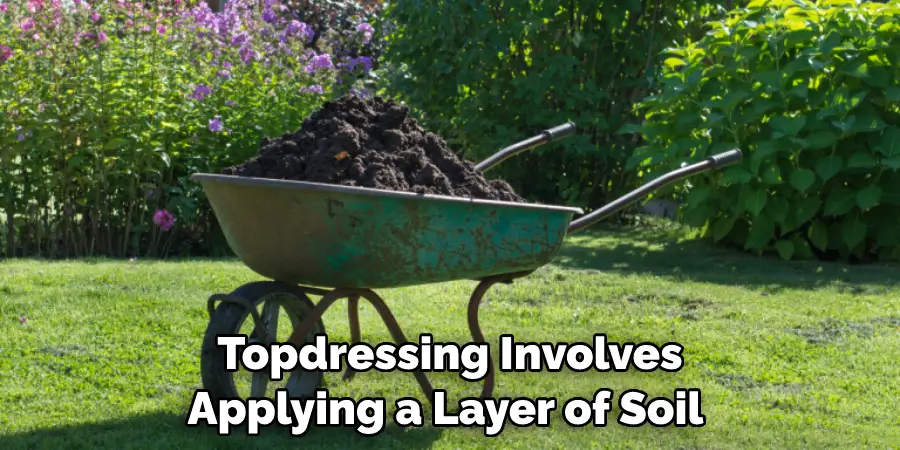
2. Core Aeration:
Core aeration is a process that involves removing small cores of soil from the low spots to improve water penetration and alleviate compaction. Rent or purchase a core aerator and run it over the affected areas. The removed cores can be left on the surface to break down naturally or raked into the low spots to fill them.
This method helps create channels for water, air, and nutrients to reach the grass roots, promoting healthy growth.
3. Leveling with Sand:
If the low spots are relatively shallow, using sand can be an effective solution. Begin by clearing any vegetation and debris from the area. Spread a layer of coarse sand evenly over the low spots, making sure not to exceed a thickness of 1 inch.
Use a leveling tool, such as a rake or board, to distribute the sand and achieve a smooth, level surface. Compact the sand gently by walking over it or using a lawn roller. Reapply sand as needed until the low spots are adequately filled.
4. Soil Amendment:
For low spots caused by poor soil quality, soil amendment can be beneficial. Start by removing any weeds or vegetation from the affected area. Add organic matter, such as compost or well-rotted manure, to the low spots and incorporate it into the existing soil using a garden fork or tiller.
Organic matter improves soil structure, water retention, and nutrient availability, thus promoting healthier grass growth and leveling the low spots.
5. French Drain Installation:
If the low spots in your yard are due to excess water accumulation, installing a French drain can effectively resolve the issue. A French drain consists of a perforated pipe surrounded by gravel and wrapped in landscape fabric. Dig a trench from the low spot to a designated drainage area, ensuring a gradual slope for water flow.
Place the drain pipe in the trench, cover it with gravel, and wrap it in landscape fabric to prevent clogging. Backfill the trench with soil, ensuring proper compaction.
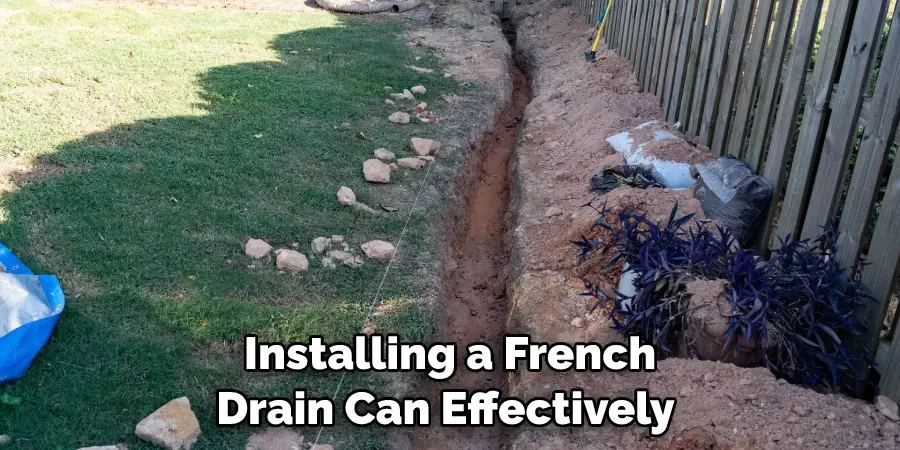
6. Reseeding and Overseeding:
Reseeding or overseeding is a method that involves planting new grass seeds in low spots to promote growth and even out the lawn’s surface. Begin by removing any debris or weeds from the low areas.
Loosen the soil using a garden fork or tiller and level the spots as much as possible. Spread grass seeds over the low spots, following the recommended seeding rate for your particular grass type. Rake the seeds lightly into the soil and keep the area consistently moist until the new grass becomes established.
7. Sod Installation:
For immediate results and a quicker fix, sod installation is an excellent option for low spots. Begin by preparing the low areas, removing any existing grass, weeds, or debris. Level the spots as much as possible and moisten the soil lightly.
Lay the sod pieces over the low spots, ensuring they fit tightly together without overlapping. Use a lawn roller to press the sod firmly into the soil, eliminating air pockets. Water the sod thoroughly and keep it consistently moist during the establishment period.
8. Terracing:
If you have sloping areas causing low spots, terracing can help create level sections in your yard. Start by determining the desired terraced levels and marking them with stakes and string. Dig trenches along the marked lines, creating level areas between the trenches. Use the excavated soil to fill the low spots, compacting it gently.
Build retaining walls using bricks, stones, or timber to hold the soil in place. Backfill behind the retaining walls and level the terraced sections.
9. Grading:
Grading involves reshaping the terrain of your yard to eliminate low spots and improve drainage. This method is best suited for extensive leveling projects or when dealing with severe drainage issues.
Consider hiring a professional grading contractor who will use heavy machinery, such as a bulldozer or bobcat, to redistribute soil and create a more even surface. Professional grading ensures proper slope and water flow, addressing low spots and preventing future water-related problems.
10. Professional Landscaping Services:
For complex or large-scale low spot issues, it may be best to seek professional landscaping services. Professional landscapers have the expertise, equipment, and knowledge to accurately diagnose the underlying causes of low spots and provide tailored solutions.
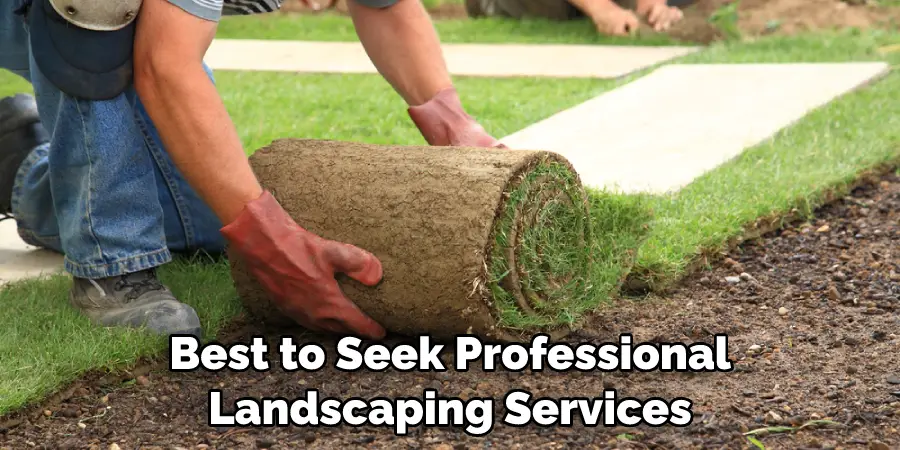
They can assess your yard, develop a comprehensive plan, and execute the necessary steps to level your lawn effectively.
Things to Consider When Fixing Low Spots in Yard
Once you have identified the low spots in your yard, there are a few things to consider before moving forward with the repair process.
1. How deep are the holes
If the low spots are just a few inches deep, then it may be possible to fill them in with soil and compact it down. However, if they are deeper than that, you will probably need more specialized materials such as sand or gravel to fill in the voids.
2. Is there any underlying drainage issue
Low spots can often be caused by poor drainage from gutters and other sources. You should check for leaks, clogged drains, and anything else that might contribute to poor drainage before beginning any repair work.
3. What is the terrain like around the are
Depending on how steep the surrounding terrain is and what type of soil is present, different methods may be needed for repairing a low spot.
4. How much space do you have
Depending on the size of the area and the types of materials needed to fill it in, you may need more or less space to complete the job. It’s important to measure out the area before beginning any work so that you know how large of a project it will be.
5. What kind of long-term repairs are needed
If you’re only dealing with low spots, then filling them in with soil may be enough to fix the immediate problem. However, if you’re dealing with more severe drainage issues, then it’s important to consider installing drains and other infrastructure to address these issues in the long run. This will help prevent future low spots from forming and ensure that your yard stays healthy for years to come.
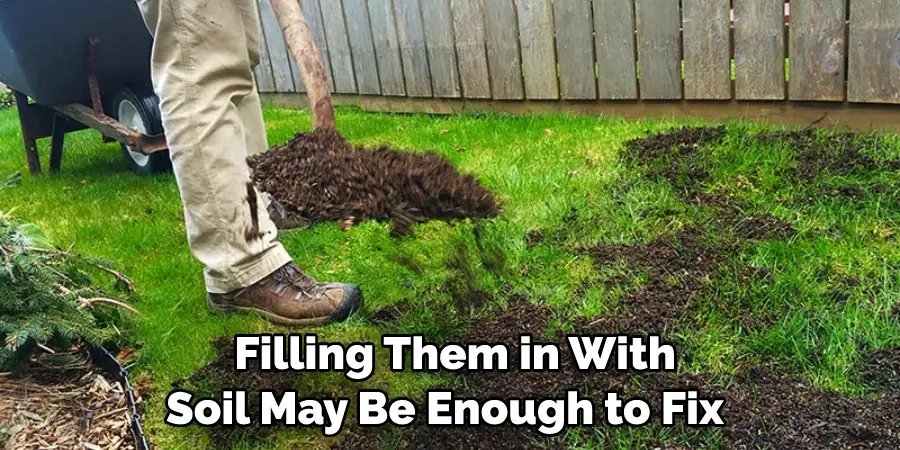
Conclusion
By following these steps on how to fix low spots in yard, fixing low spots in the yard is a straightforward process that can be completed without any special tools or equipment. It just requires time and patience, but it’s possible to transform your lawn into an area you and your family can enjoy.
Don’t forget to fertilize and reseed after you’ve smoothed out the areas to ensure your grass will grow and remain healthy.
This simple process can have an enormous impact on the aesthetic of your lawn, so don’t be afraid to tackle this project yourself. As we covered earlier, learning how to fix low spots in the yard can help keep your outdoor space looking beautiful for years to come. Now get out there and start using these tips today!

